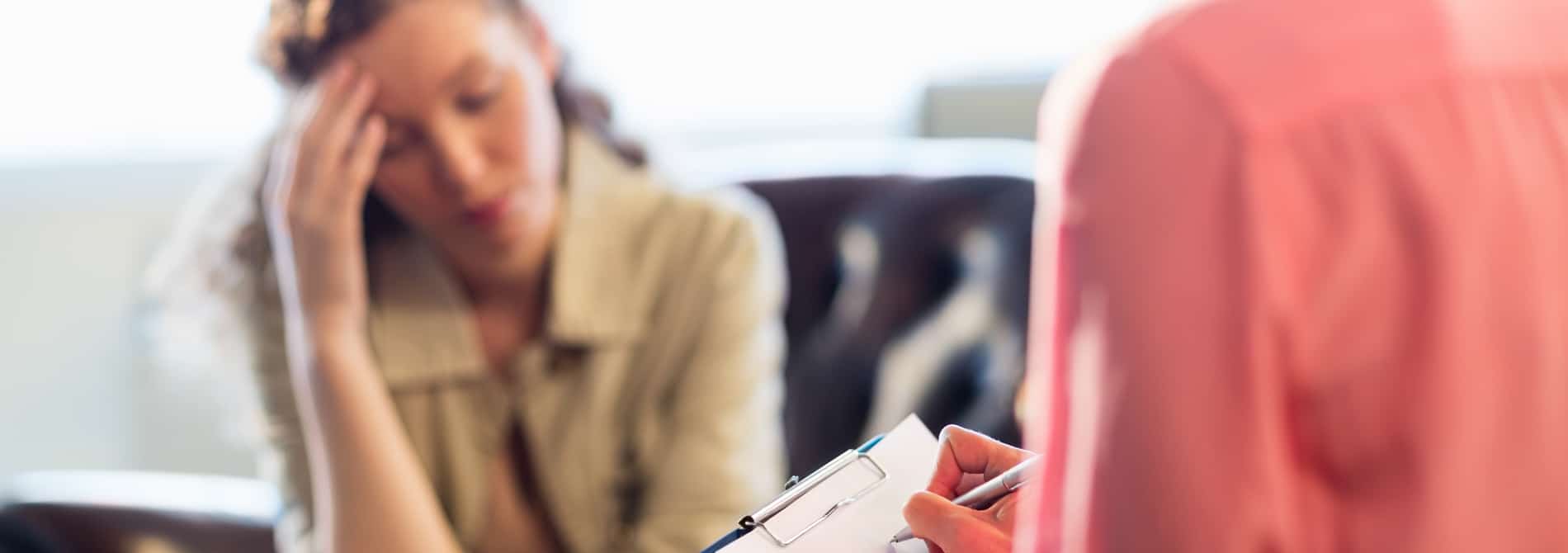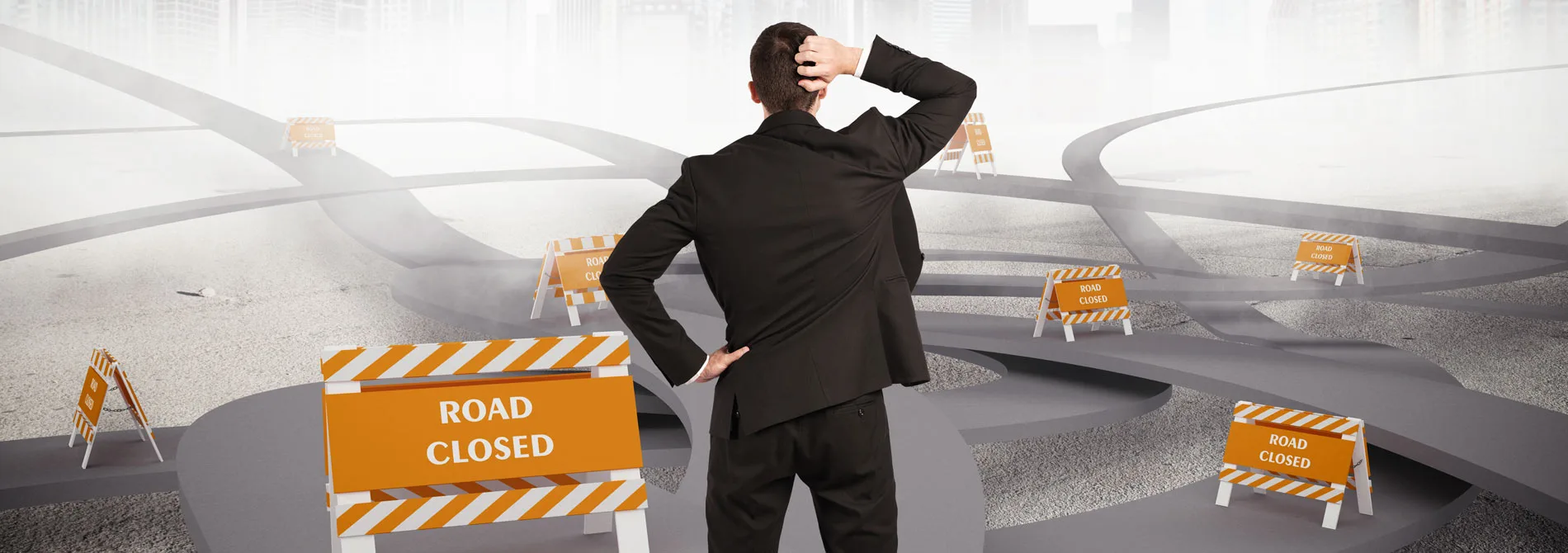Even if you’ve heard the term “bipolar disorder”, you may haven’t considered how it might relate to a loved one’s behaviors and drug use. Asking yourself, “What is bipolar disorder?” and taking time to understand how it’s affecting your family member are the first steps in getting them the specialized help they need. Bipolar disorder is a type of mood disorder that can significantly impact emotions, behaviors, and daily life. As we explore this mental health disorder, we’ll share signs and symptoms, diagnoses, and how to respond when someone with bipolar disorder has a history of substance use.
Bipolar disorder is a mental health condition with alternating manic and depressive episodes. In some cases, these episodes may occur at the same time. It shows up in 2.8% of the U.S. adult population and it’s caused, in part, by a biochemical imbalance. Treatment involving a combination of therapy and medication is typically involved. Untreated bipolar disorder can contribute to the development of substance use disorders. Dual diagnosis treatment is recommended for a person with addiction and a co-occurring mental health disorder.
If you or a loved one need help, call our admissions team today at 561-841-1033.
What is Bipolar Disorder?
Bipolar disorder is a mental health condition that’s marked by two distinctly different periods. One is a manic episode, and the other is a depressive episode. People often think of them as “highs” and “lows.” In the past, bipolar disorder was commonly referred to as manic depression. It’s partly caused by genetics, although lifestyle and environment can play a role in its severity.
Bipolar disorder tends to have a major impact on a person’s ability to function daily. Depressive episodes can affect their eating, encourage negative self-talk, and disrupt their ability to work. Manic episodes can increase their energy, reduce their ability to sleep, and provide them with overconfidence.
People with untreated bipolar disorder may experience hallucinations when their symptoms are active. They may become delusional. For instance, a sense of paranoia may appear during an episode of mania or depression.
Now that we’ve answered, “What is bipolar disorder?” it’s time to identify common signs and symptoms, how it’s diagnosed, why co-occurring substance use disorders are common, and available treatment options.
Types of Bipolar Disorder
There are several distinct types:
- Bipolar I Disorder – Includes at least one manic episode, often accompanied by major depressive episodes.
- Bipolar II Disorder – Involves at least one hypomanic episode and one major depressive episode, but no full manic episodes.
- Cyclothymic Disorder (Cyclothymia) – A milder form characterized by periods of hypomanic symptoms and depressive symptoms that don’t meet full diagnostic criteria but still cause significant disruption.
Accurate diagnosis by a trained clinician is essential, as symptoms often overlap with anxiety, ADHD, or unipolar depression.
How Common is Bipolar Disorder?
Estimates put the diagnosis of bipolar disorder at between 1 in 100 and 1 in 200 people. That’s one percent or fewer of the population. It’s important to point out that bipolar disorder doesn’t come from environmental factors, such as family relationships. The episodes can be worsened by environmental factors, though.
Signs and Symptoms
During a manic episode, your loved one may exhibit unusually high energy. They may seem far more talkative than normal. Someone who’s typically quiet or withdrawn may suddenly look like “the life of the party.”
You may hear a person experiencing manic episodes talk faster than normal and try to squeeze a lot of topics into one conversation. Their thoughts are racing most likely. They may think they can do more than people expect or would be reasonable to accomplish at one time.
You may notice a change in appetite during manic episodes as they eat less food. They may sleep a lot less, too. The result of poor judgment may be apparent. It can show up as eating and drinking excessively, having unprotected sex with random people, or giving away money and possessions for no real reason.
Signs of depressive episodes can be easy to spot, too. Your loved one may start to eat more and put on weight. They may sleep a lot longer or have trouble staying asleep.
You may notice someone in a depressive state seems unable to do even simple tasks. Concentrating and making decisions may become difficult as well. These issues can cause problems at work if they make your loved one seem unreliable and unproductive.
If your loved one is in a depressive episode, they may talk slowly or forget what they’re talking about. They may show signs of disinterest in their favorite activities and feel no pleasure. They may even refer to feeling hopeless or worthless.
How is Bipolar Disorder Diagnosed?
Diagnosis of bipolar disorder involves a psychological exam to uncover the presence, intensity, and duration of symptoms. It’s important to distinguish between types of bipolar disorder so the proper treatment can follow. The three types are Bipolar I, Bipolar II, and Cyclothymic Disorder.
People with Bipolar I Disorder have manic episodes that last at least a week. Also, they may experience symptoms with such severity that they require immediate medical attention. This could mean hospitalization. Their depressive episodes last at least two weeks. They may experience a mix of both manic and depressive episodes at the same time, too.
People with Bipolar II Disorder have a milder form of this mental health condition. The pattern of depressive and hypomanic episodes may look similar to a person with Bipolar I. The difference is their episodes aren’t full-blown.
The third version, Cyclothymia, is marked by periods with symptoms of hypomania and depression that last for at least two years in adults. The period of time is only a year for adolescents. The severity of those episodes doesn’t qualify them for a diagnosis with either Bipolar Disorder I or Bipolar Disorder II.
What is Bipolar Disorder With Addiction?
A person with untreated bipolar disorder may turn to drugs or alcohol to cope with the demands of each episode. Someone feeling manic might drink to calm themselves down. During a depressive episode, they may look for “uppers” to stimulate them to be social or have the energy to complete tasks.
Coping with alcohol, prescribed medication, or illegal drugs can become routine for a person with an untreated mental health condition. Routine use of a drug increases the risk of addiction. Using a drug in larger amounts also increases that risk.
Once a person with bipolar disorder develops a substance use disorder, every aspect of their life is touched by both disorders. They may begin to only spend time with sources for drugs. They may disconnect from friends and family. Their inability to function could lead to job loss and difficulty to become employed again. Without stable income, they may be unable to pay for housing. A loss of housing could have them turning to friends and family for a place to stay and getting rejected.
Bipolar Disorder Treatment
Treating bipolar disorder effectively is a multi-step process. As there is no cure for the disorder, a person must learn healthy ways to manage their symptoms and lessen them. A more severe condition may require hospitalization as a first step. Under the care of a medical team, a patient can be given a higher level of care and be prescribed medications to reduce the intensity of symptoms.
A variety of therapies can be used to treat bipolar disorder. Individual counseling encourages a person to talk about their symptoms and learn the skills to make healthy choices when they’re feeling high or low. Group therapy invites participation in a supportive setting where other people have similar experiences and stories to share. Cognitive-behavioral therapy (CBT) helps bipolar patients identify ways they have thought and behaved in the past and retrain themselves to practice new strategies in coping with their symptoms.
Family therapy is another recommended option for a person diagnosed with bipolar disorder. In a structured and safe setting, a patient can hear from loved ones and discuss ways to repair family relationships. In most cases, learning new ways to communicate needs with one another opens a path to healing as a family unit as everyone aligns on what bipolar disorder is.
Co-Occurring Treatment for Bipolar Disorder and Addiction
People with untreated bipolar disorder aren’t necessarily new to addiction treatment. They may have made the effort to start recovery one or more times before. Without mental health attention during that time, they may have reached a point where sustaining sobriety felt impossible.
Treatment for co-occurring disorders is available and recommended for people with bipolar and substance use disorders. Dual diagnosis treatment allows an individual to receive personalized care for both disorders in an integrated program. This kind of residential treatment teams up specialists from different departments to help create a plan of action for a patient throughout the course of their stay and beyond.
Multiple types of interventions can be used in dual diagnosis treatment. Individual counseling is a staple feature. Group therapy is another standard. Setting a patient up for long-term success also involves exploring options for continuing care. Alumni programs can be an effective way to keep a former patient connected to a supportive community and increase the chances of sustaining sobriety.
The opportunity to learn new life skills is one more asset of a personalized inpatient program. During the course of a stay, a patient can practice meditation, goal-setting exercises, and begin new recreational regimens. Recreation time not only promotes wellness, it introduces team-oriented games, trust activities, and problem-solving initiatives.
How Hanley Center Can Help: Integrated, Individualized Care
Hanley Center’s Residential Mental Health Program is designed for individuals facing primary psychiatric conditions like bipolar disorder—even when substance use isn’t present. For those with co-occurring substance use disorders, our dual diagnosis treatment offers a seamless continuum of care, grounded in trauma-informed therapy, psychiatric support, and holistic healing.
Our approach includes:
-
Comprehensive diagnostic assessments
-
24/7 clinical and psychiatric support
-
Medication management tailored to individual needs
-
Evidence-based therapies like CBT, DBT, and EMDR
-
Education about bipolar disorder and relapse prevention
-
Family support and integrated aftercare planning
Whether you’ve recently been diagnosed or have struggled for years, we help individuals and families better understand bipolar disorder and reclaim their lives.
Hanley Center is a well-known care provider offering a range of treatment programs targeting the recovery from substance use, mental health issues, and beyond. Our primary mission is to provide a clear path to a life of healing and restoration. We offer renowned clinical care and have the compassion and professional expertise to guide you toward lasting recovery.
For information on our programs, call us today: 561-841-1033.




